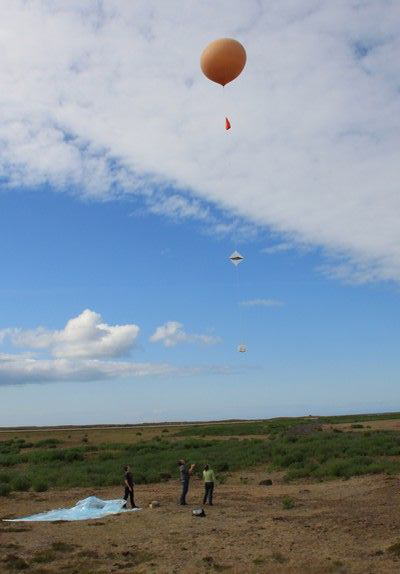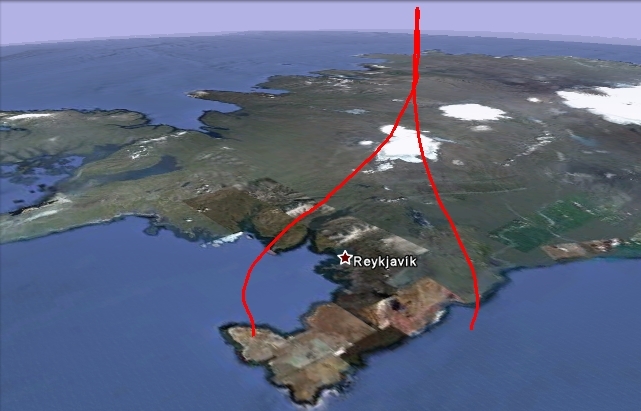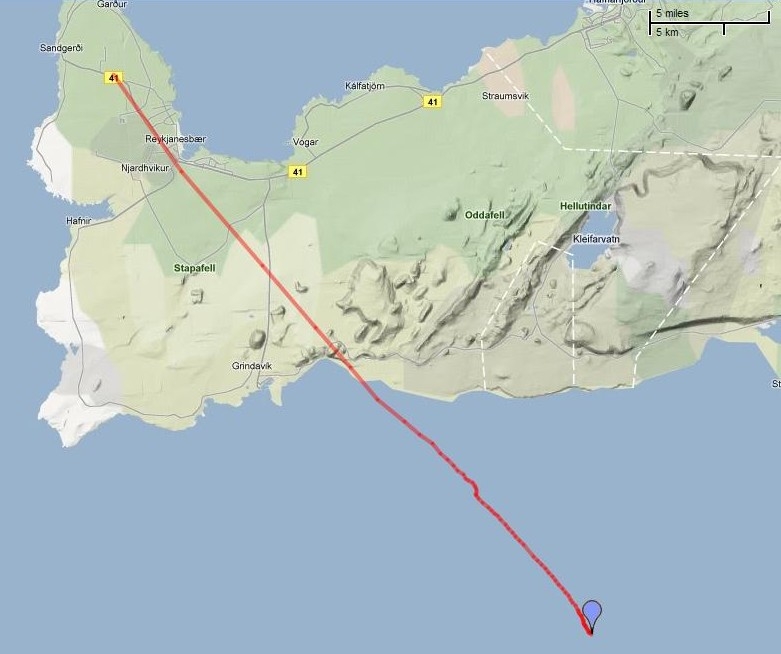Detecting the presence of volcanic ash…

In April 2010, Iceland’s Eyjafjöll volcano erupted, paralysing Europe’s air traffic for five days. “If we’d had more precise information about the concentration and dispersion of the volcanic ash, we wouldn’t have needed to ground all air traffic as a precautionary measure,” says Nicolas Verdier, head of tropospheric tracer balloons at CNES.
In response, Jean Baptiste Renard’s team at the LPCEE environment and space physics and chemistry laboratory (1) and Environnement SA, an industrial company, formulated the idea to miniaturize an aerosol counter — designed to measure these tiny particles suspended in the atmosphere — and fly it on a sounding balloon to track ash clouds in real time.
“Until now, this type of instrument has only been used for research purposes,” explains Nicolas Verdier. “But small devices, weighing about 400 grams, could be deployed systematically, each time a volcano erupts.” To test its effectiveness, an initial measurement campaign was organized in Iceland, near Reykjavík, from 18 to 24 July 2011, with the support of the Icelandic Meteorological Office (IMO).
The tiny instruments, called LOACs (light optical aerosol counters), were installed on three balloons operated by the IMO. The results were positive, with aerosols detected throughout each balloon’s two-and-a-half-hour flight, at altitudes up to 30 kilometres.
… And tracking the movement of particle clouds

To make the tool useful for meteorologists, the next step is to further reduce the weight of the LOAC aerosol counter by a few dozen grams and test it on tropospheric balloons, designed for missions lasting several days.
“We hope to fly this instrument on a superpressure boundary layer balloon (2) to track volcanic particles throughout the cloud’s entire journey in the atmosphere and in turn estimate how it will evolve with time,” continues Nicolas Verdier.

In the meantime, the LOAC measurement instrument will be used to detect other types of naturally occurring and human-made aerosols.
“Two campaigns are planned,” says Nicolas Verdier. “The TraqA campaign in 2012 will measure industrial pollution from Fos-sur-Mer on France’s Mediterranean coast. Then the Charmex campaign will tell us more about how sand is transported from the Sahara to Europe.”
(1) UMR 6115 – University of Orléans / CNRS (French national scientific research centre)
(2) Layer of the atmosphere directly influenced by Earth’s surface, from 0 to 1 km above ground level.